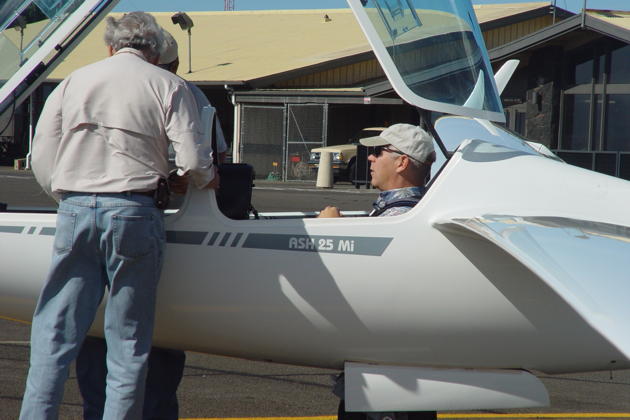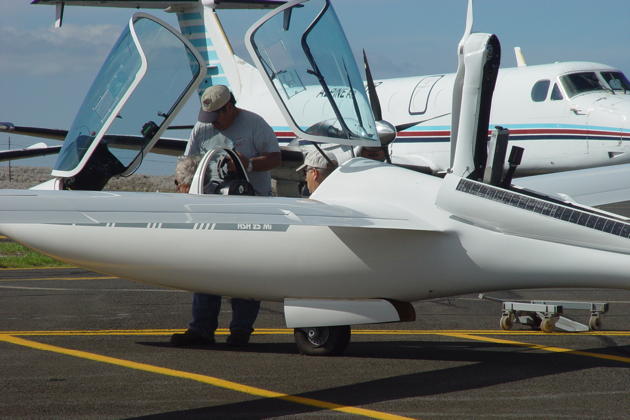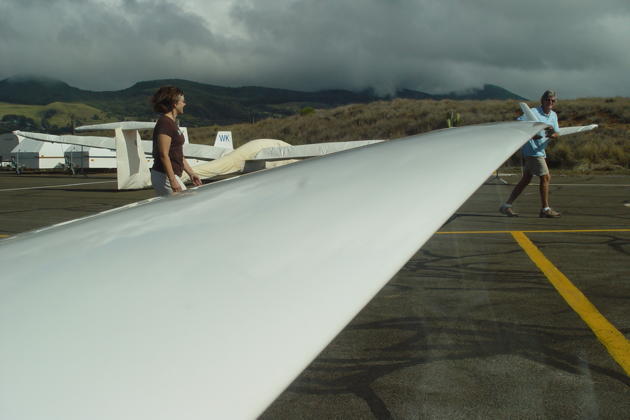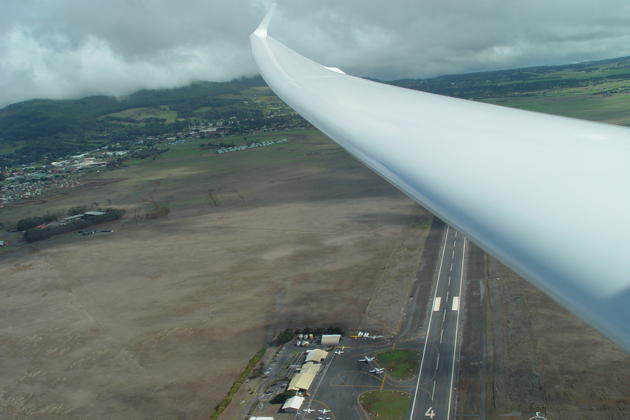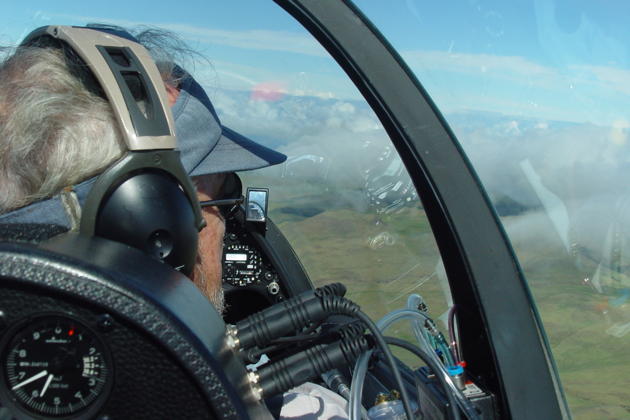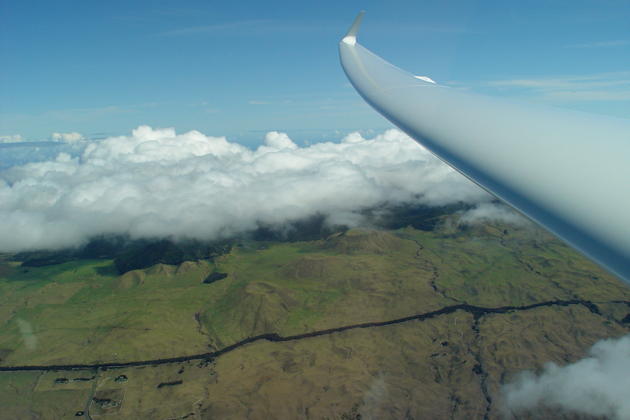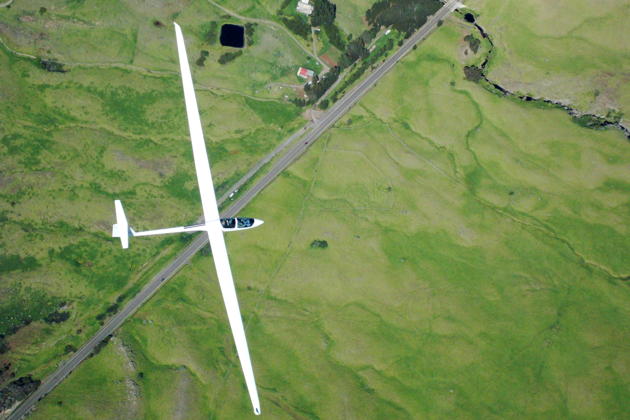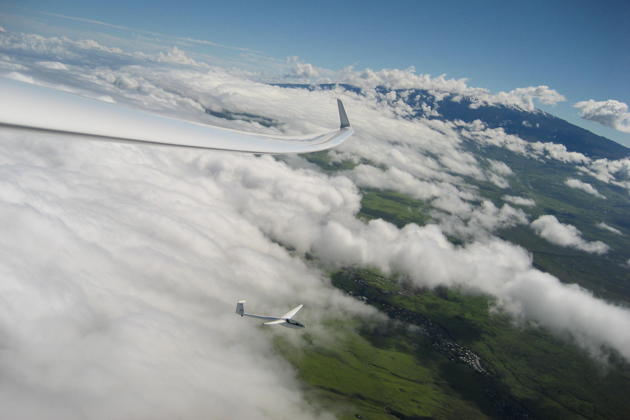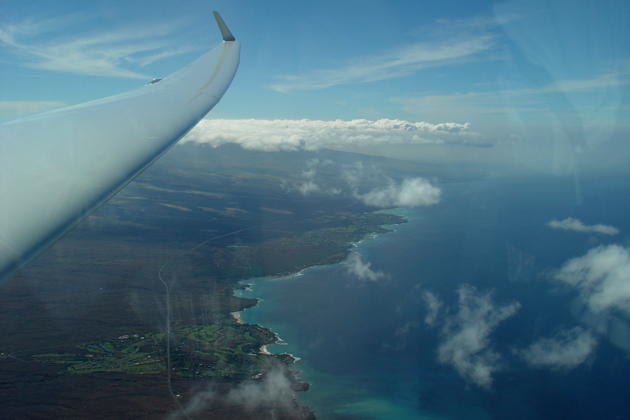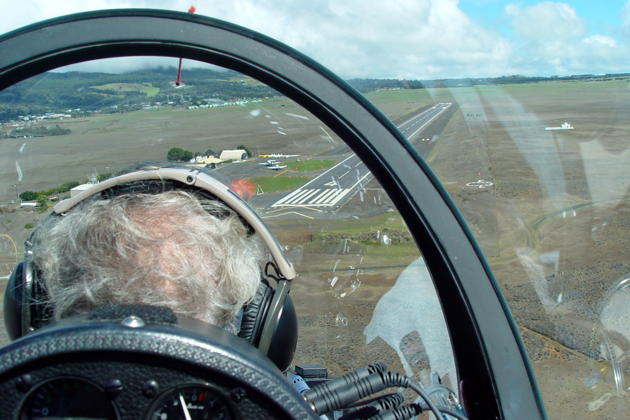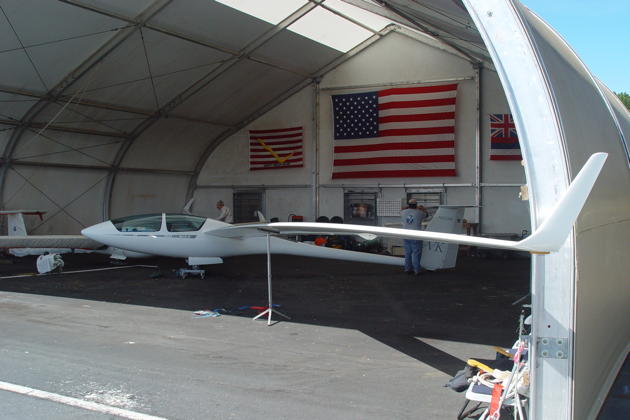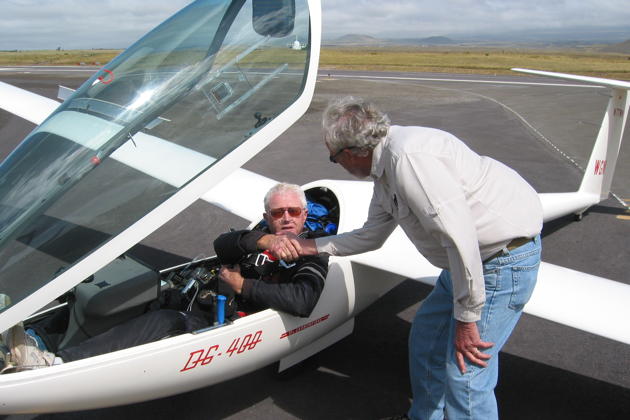FlightLog Archive
∟Aircraft Flown
Soaring in the ASH-25 Mi - Nov 2008
While planning a visit to the Big Island of Hawaii after a 30 year hiatus, I was able to connect up with a great friend from my Air Force pilot training days at Williams AFB - Greg Trebon. Greg retired a few years ago from the Air Force, and is now living in Kailua-Kona, on the Kona west coast of the Big Island. Besides flying for Big Island Air, Greg has established himself as a general aviation coordinator on the Big Island, and has built up a great network among Hawaiian aviators.
Greg and I had flown general aviation aircraft in the past, and Greg knew of my enthusiasm for soaring. He mentioned that a friend flying out of Waimea, on the north part of the island, had a 'high-performance two-place sailplane' that he offered to fly me in. My anticipation grew when I found out Greg's friend was Woody Woods, a well-known soaring competition pilot, and the fact that his sailplane was an ASH-25 Mi, a super self-launching sailplane with a 26-meter (85 foot) wingspan, and a best glide ratio of 60:1!
We arrived on the Big Island on Friday afternoon, and I was surprised by the foggy/hazy conditions as we descended into the Kona airport. Greg called the condition 'Vog', which stands for 'Volcanic Smog', which is formed when sulfur dioxide and other gases emitted by an erupting volcano mix with oxygen and moisture in the presence of sunlight. The term is most often applied to the island of Hawaii, where the Kilauea volcano has been erupting continuously since 1983, and Friday evening had a heavy Vog level.
On Saturday morning we headed up the west coast of Hawaii, where the south winds changed dramatically to the prevailing northeast trade winds, providing stunning clear skies and great visibility in the beautiful late November Hawaiian sun. Arriving at the Waimea-Kohala airport, Greg, Mary and I met Woody Woods and gingerly began extricating the 85 foot wings of the ASH-25 from its purpose-built hangar. With the trade winds blowing steadily at around 20 knots down runway 4, Woody had me jump right into the backseat and get settled in, while Greg, Woody, and local sailplane pilots Dave Bigelow and Clyde Arakawa helped maneuver the ASH-25 for launch. Woody, Dave and Clyde are members of Mauna Kea Soaring, a small group of soaring enthusiasts flying out of Waimea. Woody had towed Dave Bigelow from here in his DG-400 in 4 April 2008 when Dave set the new Hawaiian state altitude record of 33,531 feet in the Mauna Kea wave, taking over that record from Woody.
Woody got settled in the front cockpit, which contained the controls for the fuel-injected rotary engine, and we donned our Bose ANR headsets and completed pre-flight checks. We were then pushed onto the runway, where Woody started the engine and began the warm-up, which allowed us to reach required temperatures for takeoff in about 3 minutes. Revving the engine, we left Greg, our wing runner behind and quickly reached takeoff speed in the 20 knot headwind. Woody picked up about 60 knots, then began a climbing right turn toward the southeast and Mauna Kea, then continued to climb at 5-600 FPM as we continued our turn west to the southern foothills of the Kohala mountains. Taking over the flight controls, I got a feel for the handling of the ASH-25, and was surprised how comfortable and stable it felt, especially in pitch. Roll forces were surprisingly light, due to nearly the full span flap/aileron combination. As expected, you need a good boot of rudder to initiate and roll out of turns, but not much more than other long winged two-seaters, such as the DG-1000.
The strong trade winds were developing rotor clouds as they spilled over the Kohala mountains, and Woody pointed me toward an area that looked good for some potential wave lift. From the Waimea airport elevation of 2671', we continued to motor up to 5500', then Woody throttled back to cool the engine as we started engaging bits of lift. Once established in some steady but choppy lift at 6300', Woody shut down the engine, which centered its propeller and quickly retracted, turning us now into a true 60:1 sailplane. Woody pointed out local landmarks while we centered the lift in figure eights, still more rotor-like in its bumpiness than true laminar wave lift. Alternating with Woody, and using his location pointers, I was able to climb to 9500', but no further.
Woody headed us to some potential lift in an area where we expected a secondary wave, but little lift was available. The visibility remained fantastic to the ocean shore to the west, and also back southeast toward Mauna Kea. I headed back to the primary lift area to regain a bit of altitude, and then Woody suggested we head back east to the Waimea airfield to some building cumulus toward Mauna Kea. I got a nice demonstration of the cruise capability of this 60:1 beauty as we lost very little altitude in the cruise back, smiling in the jet-like performance with cruise flaps set.
I cranked into a fairly tight thermaling turn under some ragged cumulus, which were getting chopped apart in the strong trade winds. It was a good exercise in rudder coordination, which came surprising easy, but I noticed a tendency to pick up a bit too much speed. Woody, I guess I need to come back to figure out the trim system better!
After an hour and half of soaring in this stunning sailplane, Woody took over nearing the Waimea airport as we entered downwind, then flew a nice steep approach using the powerful spoilers into the strong headwinds, which provided lots of options, but made for a beautiful touchdown and very short rollout, right into Greg Trebon's waiting hand on our wingtip! Thanks, Woody for allowing me to soar in your fantastic bird!
Greg, you definitely need to take Woody up on his ASH-25 flight offer! And since Woody did mention that they need a current glider flight instructor on the Big Island, I need to re-evaluate my personal retirement options....!
IN MEMORIAM
Dave Bigelow, who we met while soaring in Hawaii, was very determined in his goal of setting soaring altitude records on the Big Island. After setting the new Hawaiian state altitude record of 33,531 feet in the Mauna Kea wave in April 2008, Dave set his goal on 40,000 feet. Unfortunately, while climbing in powerful mountain wave conditions on 16 Jan 09, Dave and his DG-400 were lost. Dave Bigelow is now among the clouds he soared so well in!
From a friend:
Aloha David, you have followed your passion to the ultimate heights, riding the sweetest winds on earth. May your spirit soar forever now!
 KASPRZYK
KASPRZYK